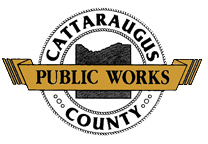What is Environmental Stewardship?
Environmental stewardship is the idea that we all benefit from a clean environment and we all take actions that influence it. Therefore, we all have a responsibility to maintain the quality of the environment. This includes reducing consumption, recycling, re-purposing, and diverting waste from landfills.
What is sustainability?
Sustainability means meeting the needs of the present without compromising the ability of future generations to meet their needs. Sustainability places equal importance on social, economic, and environmental impacts.
What is Source Segregation?
Source segregation is the diverting of materials from the waste stream to reduce the impact on landfills and the environment. This includes the diversion of recyclables such as glass, plastic, tin, metal, paper and cardboard; yard waste that can be converted to mulch or compost; construction and demolition debris that can be repurposed or reused; and electronic waste that can be recycled.
Is there waste that Cattaraugus County Transfer Stations cannot accept?
Yes - Transfer Stations cannot accept materials including, but not limited to: Biohazardous or infectious waste, liquid latex or oil base paints, motor oils, flammable liquids of household hazardous waste, asbestos materials, fluorescent tubes or compact fluorescents, compressed gas, toxic or contaminated waste, boats and trailers, bulky items or construction and demolition debris in excess of 8' in length.
If I reside outside of Cattaraugus County, but have a property or business in the County, can I use the County transfer stations?
Yes, but only for waste that was generated in Cattaraugus County. All that is required is proof of a Cattaraugus County address (i.e. property tax receipt, utility bill, etc.).
Does the County receive funding from New York State for the recycling and disposal of tires?
No - The money collected by New York State for tire disposal at the time you purchase new tires never reaches the municipalities. Some of that money supports the Department of Environmental Conservation in the detection and mitigation of illegal tire dumps. The money collected by the transfer stations for the disposal of tires does not cover the cost of collection, handling, storage and disposal of tires. The shortfall shows up as deficit spending and is paid by the taxpayer.
Does the County receive funding from New York State for the disposal of Electronic Waste?
No - Currently there is no revenue stream for electronic waste. In 2019, the County paid $78,000.00 in environmental fees to a recycler. That amount increased in 2020 and will increase significantly in 2021 when it is reported that flat screens will be charged along with CRT (Cathode-ray tube) televisions. This service shows up as deficit spending and is paid by the taxpayer.
Does the County receive revenue for the disposal of yard waste?
No - Currently, there is no revenue stream for the collection, handling, hauling, and disposal of yard waste. Collection is done at the County transfer stations. The handling and hauling of yard waste is a service that shows up as deficit spending and is paid by the taxpayer. The County strongly encourages the practice of composting and mulching in place. These practices can be utilized by homeowners, park and business complexes, golf courses, cities and towns. It would significantly reduce deficit spending. If you would like to see more of an effort in this area, talk to your local legislator.
Does the County profit from my recycled plastic?
No - The plastic market has plummeted since 2016. Municipalities typically see a negative rebate (we have to pay) from the Material Recycling Facilities (MRF). This, in addition to the cost of handling, collection, preparation and hauling, is a service that shows up as deficit spending and is paid by the taxpayer. One also has to consider the conflict with the principles of sustainability. How much clean drinking water is wasted to clean plastic that is of no value and a burden to the levy?
The only marketable plastic at this time are the #1 and #2 high density polyethylene (HDPE) plastics. These are typically food grade containers such as milk jugs. The County is one of the few collection sites left that continue to recycle plastic. This continues to be done in accordance with Local and State laws.
Does the County profit from my recycled glass?
No - The County receives a nominal rebate for clear glass only. Colored glass goes into the regular garbage (MSW). The rebate covers some of the hauling to the recycler. The cost of handling and collection is a service that shows up as deficit spending and is paid by the taxpayer.
Are there recyclables that generate a positive rebate?
Yes - Metal, precious metal, and corrugated cardboard (OCC) can produce a positive rebate, although paper and OCC are volatile. In 2019, recyclables altogether generated approximately $111,000.00 in revenue. However, $78,000.00 of that was consumed by electronic waste disposal expenses. Plastic and paper disposal costs also degraded that revenue. In general, recycling is performed in part as a requirement of source segregation and State/Local law. Recycling is not a self-sustaining service.
What happens when recyclables are not clean?
Loads of recyclables that are not clean are rejected by the Material Recycling Facility. The County had a 5-ton load of cardboard rejected because there was also drywall in it. Why is that important? The County had to pay hauling and tipping fees to dispose of the cardboard rather than collecting a rebate.
Recyclables can be contaminated in many ways:
- A load of scrap metal was rejected because it contained a fuel can with flammable liquid.
- A load of cardboard was rejected because some of the boxes were filled with Styrofoam.
- A load of tin was rejected because a portion of the cans contained food debris.
Cooperation from the residents is essential to our recycling rebate success. The cleaner the sorts, the fewer touches the Transfer Station Operators have to make and reduces the chances that a load will be rejected.
What is the financial goal of the recycling program?
The goal is zero negative audits. Recycling will never be a profit center. Our hope is to have enough positive rebates to offset negative rebates and cover operating expenses. Thereby, we reduce the impact on the tax levy and you the taxpayer.
Do the fees for bulky items cover the cost of handling?
No - No one wants to take bulky material and the ones that do charge far more than the County Transfer Stations. Bulky material is detrimental in many ways...
- Bulky items take up considerable space in containers and trailers. The result is lighter loads which increases the cost per ton to haul.
- Because bulky items consume so much space, it requires more trips to remove it.
- Bulky material is difficult to tip into compaction trailers. Bulky items can snag material and drag more than is desired and cause material to wind up on the ground, behind the packer wall, or stuck in the throat of the trailer.
- Bulky items have caused damage to our trailers resulting in downtime on the equipment and cost to repair.
- Bulky items require more handling to reduce it to fit into containers and thereby driving up operating expense.
The County is investigating ways to better handle bulky items because the demand is so high. Specialized compaction units cost $60,000 - $71,000 each. The County is conducting cost/benefit analysis and is hopeful for a solution in the near future.
What is PYGO?
PYGO is the operating principle of Pay as You GO. Transfer stations and Convenience Centers are funded out of the levy as an essential service that help residents protect and preserve the environment and their communities. We all share that burden as environmental stewards and we do so gladly. However, pay as you go places more of the burden on the depositor for the disposal of their waste. For example, a junkyard may collect 100 tires for a fee to their consumers. Then they might expect to come to the transfer station and dispose of those tires for free. The burden of that expense is not borne by the junkyard, but by tax base that had nothing to do with the tires nor did they profit from them. PYGO prevents those kinds of abuses from occurring.

